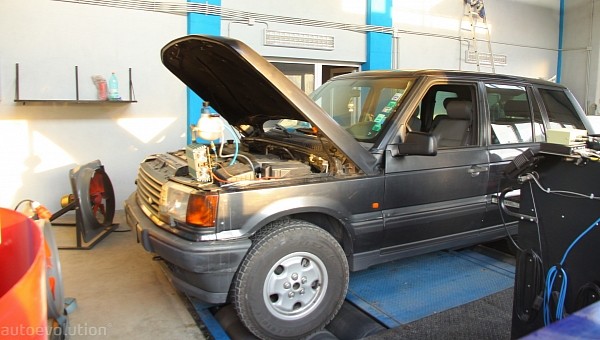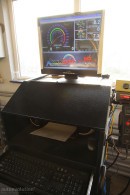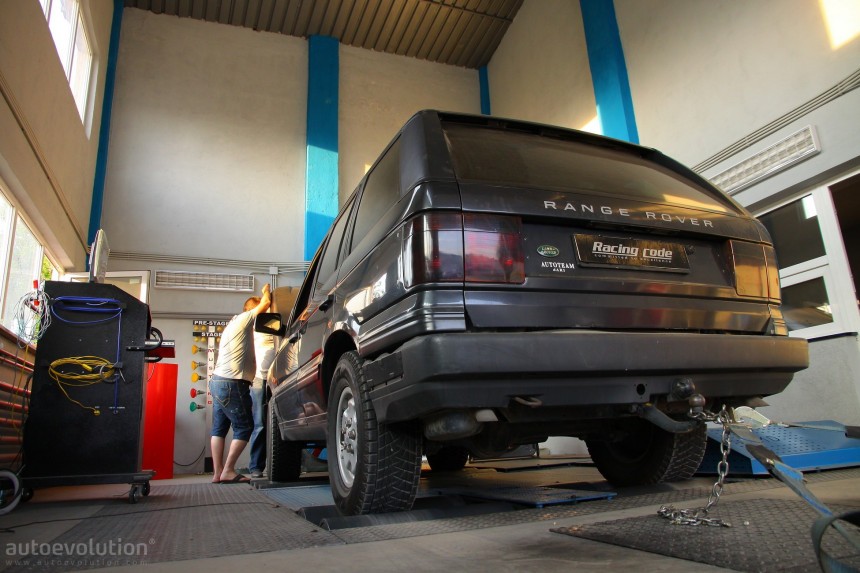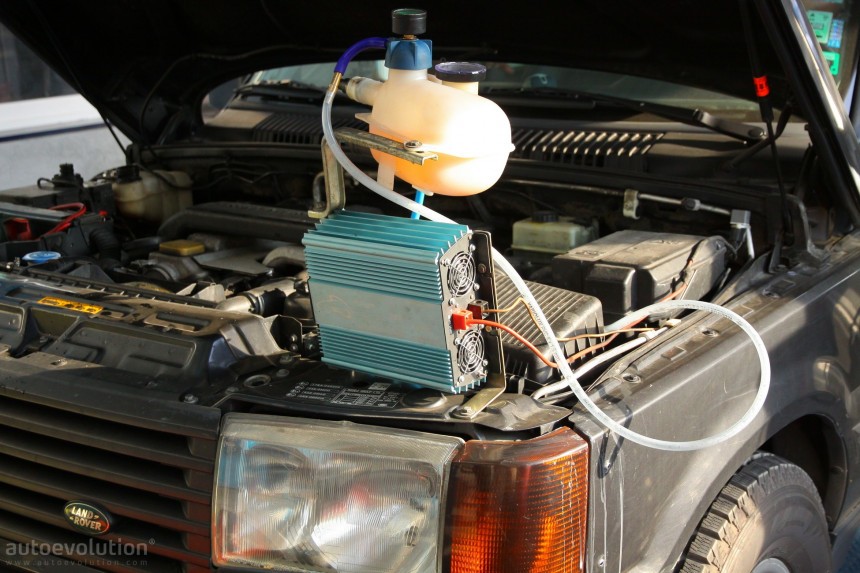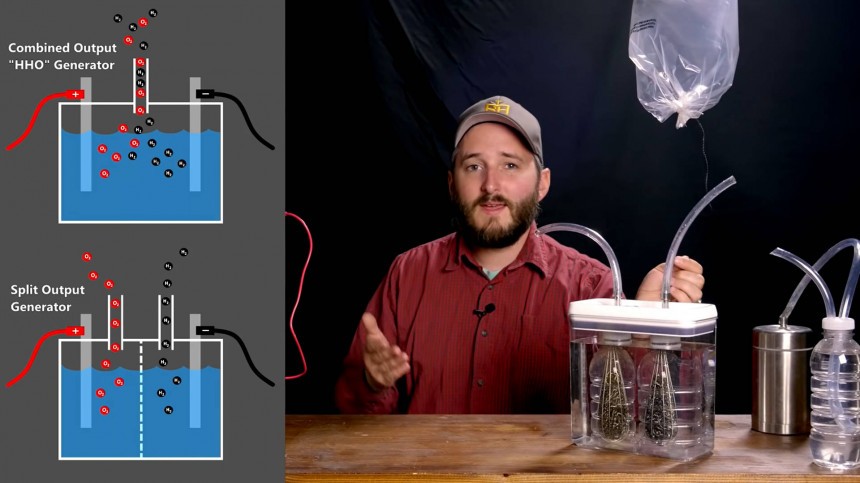While big companies are struggling to secure mass production of green hydrogen, there is an alternative solution: individual, on-demand production of this amazing gas. In addition, it's safe, you'll produce exactly as much as you use, and you won't need any storage facility. But there's a catch.
As we speak, there are about 1.5 billion vehicles in the world. It would be nonsense to believe that until 2035 all of them will disappear from the roads or will be exchanged for electric-powered ones. It's just not possible. But goods need to be moved, and people must go back and forth to their schools, jobs, or travel. All of these are going to produce massive loads of emissions, either CO2 or NOx.
Some ideas were to convert ICE vehicles into hydrogen-fueled ones by burning this gas instead of gasoline. This might be a good idea since it's easier than converting the entire vehicle into an electric one. Yet, that's still not feasible, since there are not enough hydrogen filling stations. Just look how difficult it is to install enough chargers all over the country, even though you may find electricity even on top of Pikes Peak. Hydrogen needs to be transported either by trucks or by pipes. And that's a challenge.
One of the solutions, ignored by most automakers and considered only by either small enterprises or just a few people, was to enhance the engine's burning process by adding hydrogen into the equation. On older vehicles, that was very easy, since fewer electronic components needed to be modified. Some engines didn't even need to be changed at all since the ECU measured very good values and didn't bother to interfere with those.
Hydrogen, like gasoline or diesel, is a combustible gas. It can store almost three times more energy than gasoline. But its main problem is production. The most efficient way (although it's not green) is to extract it by steam methane reforming technology (SMR). Then, you need to compress, store, transport, and fuel vehicles. That's not efficient or green at all. Hydrogen-injected diesel engines were tested since 1970, but it was too expensive and didn't provide enough efficiency to reach assembly lines.
Another way is via electrolysis. While it's not as efficient as the SMR technique, the obtaining process is green. All you need is electricity, water, and salt. It may be even your regular salt, although there are better solutions than that, such as potassium-hydroxide. The process is very simple, and you'll get hydrogen and oxygen. You can divert the H2 and take it into the car's air intake, combine it with fossil fuel, and get a better, cleaner burning process. The problem is not getting oxygen inside the engine, or the ECU will misinterpret that and will just increase the fuel quantity injected into the cylinders to match the stoichiometric ratio.
More than a decade ago, I tested a vehicle fitted with a homemade electrolysis system that was stored onboard. It wasn't fancy at all, but its efficiency was amazing. The guy who made this tested it on an old, beaten-up Range Rover turbo-diesel. In its glory days, that 2.5-liter straight-six produced by BMW was good for 136 PS (134 hp) and about 200 lb-ft (270 Nm) of torque. When we tested the car on the dyno, it managed just a tad over 102 WHP and 247 Nm (182 lb-ft) of torque, also measured at the wheel. So, you might say that it was still in pretty good shape.
When he started the hydrolysis device, two things immediately happened. First, the smoke behind the vehicle completely disappeared, and then the power and torque graphs were changed. Now the car produced 98 WHP at a lower engine speed, but the torque jumped to 254 Nm (187 lb-ft). You might think that this is not such an important upgrade. In terms of performance, you can get that with a better (or clean) air filter. But the main difference was in terms of emissions, which were cut by almost 80%. That happened in 2010.
Nowadays, other small companies are already producing these kinds of hydrolysis systems on an industrial scale, and their products are cheap. One driver shared his experience on a much more modern 2006 diesel vehicle. The results are beyond expectations, since the fuel efficiency doubled. Thanks to the hydrogen-helped system, his vehicle has a fuel consumption of just 2 liter/100 km (117.6 MPG). Tell me this is not impressive, and I'll eat my hat off.
I know that other similar systems were available for sale on the market, and some of them didn't work and were considered scams. But like in any other area, some are going big, while others are going bust. A few years ago, an American company produced the HHO generator, but as far as I've seen, that was slightly different than what I've seen on these two guys. But the problem with the HHO generator was that it sent both gaseous molecules (hydrogen and oxygen) into the engine, and that affected the results.
And here is the catch: using a split output generator might be a better solution for cars than getting a single output generator, as produced by the HHO company. And that kind of system was used by the guy with the old, beaten-up Range Rover diesel. Hydrogen burns ten times faster than diesel. In addition, it ignites unburned fossil fuel particles, leading to lower emissions. That's why his vehicle didn't emit dark clouds of smoke anymore.
We found other videos on YouTube with people who installed such devices on their vehicles and got similar results. While some claimed that they didn't get any improvements in fuel efficiency, most of them claimed that the pollution was drastically reduced. So, the technology is not very accurate on this matter. Without enough support from automakers and with limited access to testing facilities, this hydrogen-aided solution might drown.
If you have had experiences with such systems, please get in touch with us.
Some ideas were to convert ICE vehicles into hydrogen-fueled ones by burning this gas instead of gasoline. This might be a good idea since it's easier than converting the entire vehicle into an electric one. Yet, that's still not feasible, since there are not enough hydrogen filling stations. Just look how difficult it is to install enough chargers all over the country, even though you may find electricity even on top of Pikes Peak. Hydrogen needs to be transported either by trucks or by pipes. And that's a challenge.
One of the solutions, ignored by most automakers and considered only by either small enterprises or just a few people, was to enhance the engine's burning process by adding hydrogen into the equation. On older vehicles, that was very easy, since fewer electronic components needed to be modified. Some engines didn't even need to be changed at all since the ECU measured very good values and didn't bother to interfere with those.
Hydrogen, like gasoline or diesel, is a combustible gas. It can store almost three times more energy than gasoline. But its main problem is production. The most efficient way (although it's not green) is to extract it by steam methane reforming technology (SMR). Then, you need to compress, store, transport, and fuel vehicles. That's not efficient or green at all. Hydrogen-injected diesel engines were tested since 1970, but it was too expensive and didn't provide enough efficiency to reach assembly lines.
More than a decade ago, I tested a vehicle fitted with a homemade electrolysis system that was stored onboard. It wasn't fancy at all, but its efficiency was amazing. The guy who made this tested it on an old, beaten-up Range Rover turbo-diesel. In its glory days, that 2.5-liter straight-six produced by BMW was good for 136 PS (134 hp) and about 200 lb-ft (270 Nm) of torque. When we tested the car on the dyno, it managed just a tad over 102 WHP and 247 Nm (182 lb-ft) of torque, also measured at the wheel. So, you might say that it was still in pretty good shape.
When he started the hydrolysis device, two things immediately happened. First, the smoke behind the vehicle completely disappeared, and then the power and torque graphs were changed. Now the car produced 98 WHP at a lower engine speed, but the torque jumped to 254 Nm (187 lb-ft). You might think that this is not such an important upgrade. In terms of performance, you can get that with a better (or clean) air filter. But the main difference was in terms of emissions, which were cut by almost 80%. That happened in 2010.
I know that other similar systems were available for sale on the market, and some of them didn't work and were considered scams. But like in any other area, some are going big, while others are going bust. A few years ago, an American company produced the HHO generator, but as far as I've seen, that was slightly different than what I've seen on these two guys. But the problem with the HHO generator was that it sent both gaseous molecules (hydrogen and oxygen) into the engine, and that affected the results.
And here is the catch: using a split output generator might be a better solution for cars than getting a single output generator, as produced by the HHO company. And that kind of system was used by the guy with the old, beaten-up Range Rover diesel. Hydrogen burns ten times faster than diesel. In addition, it ignites unburned fossil fuel particles, leading to lower emissions. That's why his vehicle didn't emit dark clouds of smoke anymore.
If you have had experiences with such systems, please get in touch with us.
